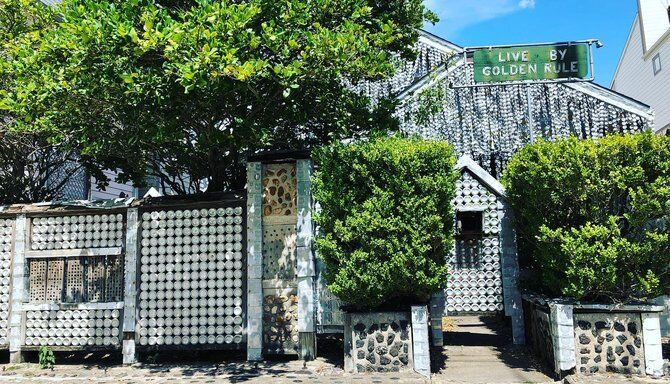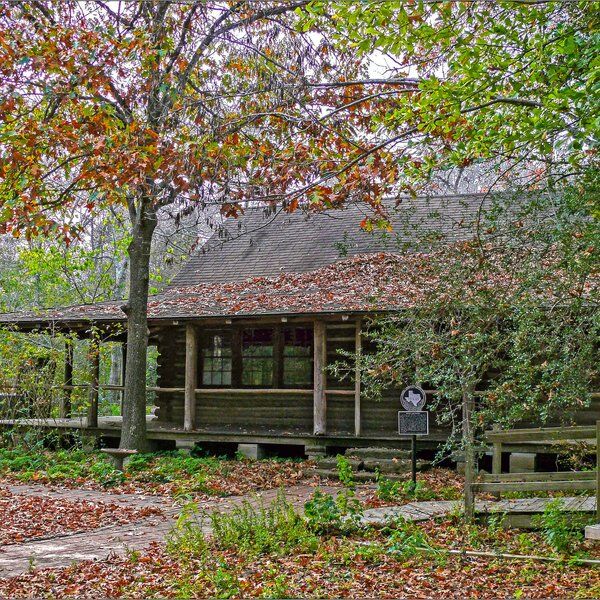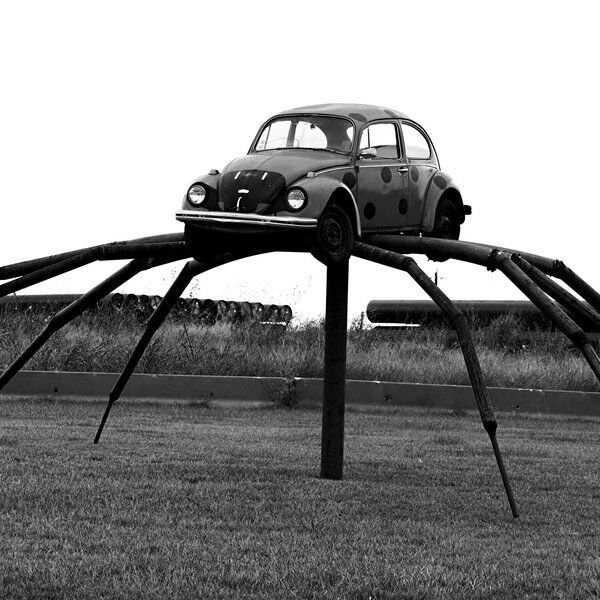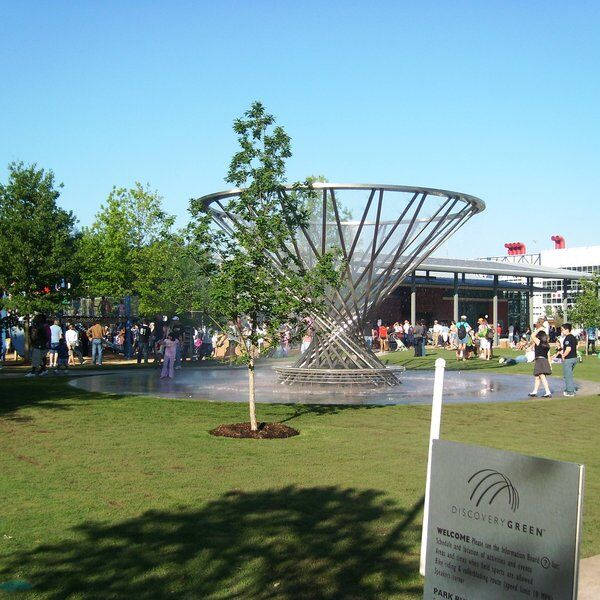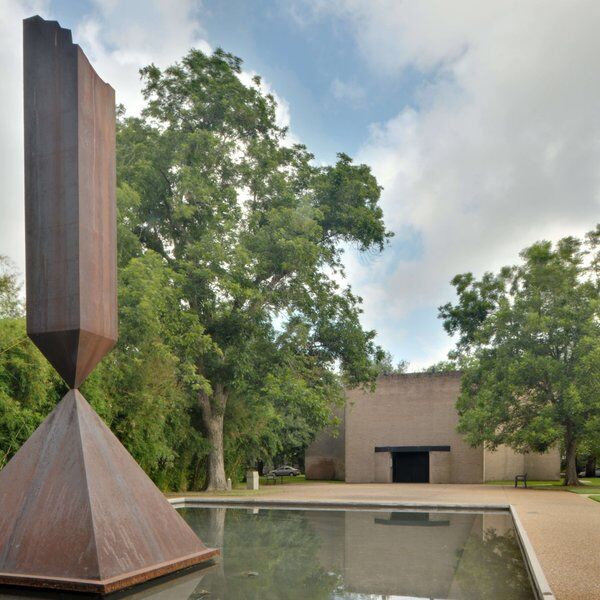Beer Can House: Glistening in the Sun
Beer Can House is a unique and unconventional architectural wonder just off the beaten path in the Rice Military district of Houston, Texas. As an ode to one man's creativity (and unwillingness to throw anything away) the house stands as an eccentric masterpiece and a shiny symbol of persistence. Today the house is owned and operated by The Orange Show Center for Visionary Art, a non-profit foundation preserving and promoting extraordinary artworks. Step into a world where recycled materials take centre stage and explore the captivating story behind this remarkable Houston landmark.
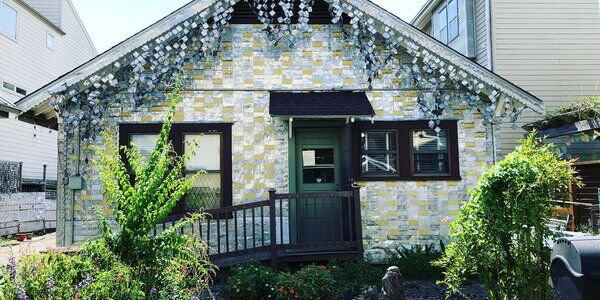
Beer Can House: Origin Story
The Beer Can House came to life through the imagination and dedication of John Milkovisch, a retired upholsterer for the Southern Pacific Railroad, with a penchant for unconventional art. In 1968, Milkovisch embarked on an extraordinary project that would transform his modest home into a renowned folk art landmark. After tirelessly working in the garden, laying concrete over the grass and inlaying marbles into redwood fence posts to form eye-catching features, he turned his attention to the house.
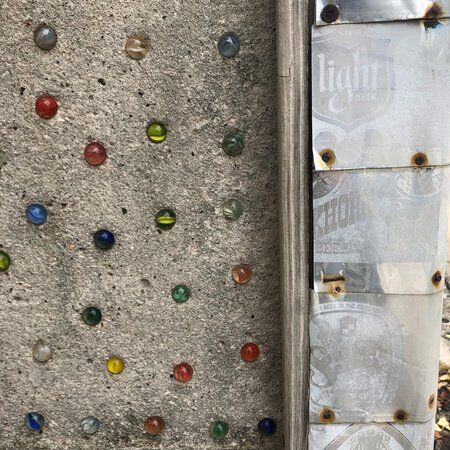
Whilst admiring these eye-catching creations – often from his patio in the evenings over a cold beer with his wife and friends – John took inspiration for the rest of his home makeover. Hating waste, Milkovisch had been collecting the beer cans, cleaning and flattening them before storing them away in his attic and the attic of his mother, for around 17 years. But it wasn’t until work in the garden was complete that he started secretly adding aluminium details to the outside of his house.
Beer Can House: A Quirky Masterpiece
At first, operating in secret so his wife wouldn’t catch on, John’s efforts were modest. However, it wasn’t long before Mary Milkovisch became aware of John’s latest project as 222 Malone Street vanished beneath a blanket of flattened beer cans. Driven by random whimsy, Milkovisch created mobiles, sculptures, windmills, windchimes and even curtains – all made from the 17 years worth of hoarded aluminium cans.
As visitors approach the house, they are greeted by a kaleidoscope of colour and shimmering metallic surfaces. The mesmerising details and unexpected patterns showcase Milkovisch's artistic flair, while the overall aesthetic exudes a delightful eccentricity that has captured the imagination of countless onlookers.

However, it would appear that John was motivated by humble intentions and worked on the house as more of a hobby than a potential masterpiece – never envisioning his Beer Can House would become the cultural Houstonian landmark it is today. After working on the house until his death in 1988, adding approximately 50,000 cans to the outskirts, it was named one of America's top 50 roadside attractions in Time magazine. A feat that would make John smile since although he “didn’t care about the art”, “he did enjoy people's reaction to his creations.”
A Testament to Persistence
Over the years, Milkovisch’s meticulously adorned his house with the recycled cans (mostly Texas Pride but usually whatever was on offer!), aligning and affixing them to the exterior walls, stringing up garlands, and adding the cut off tops to the fences. Inside, visitors can explore the intricately decorated interior, where even furniture, lamps, and chandeliers have been transformed with aluminium siding and pull tabs. Each corner of the house holds delightful surprises, showcasing Milkovisch's dedication to turning everyday objects into extraordinary works of art. In fact it is this dedication and unwavering commitment to the 20-year-long project that makes Beer Can House – and John – so special.
One particularly interesting story is Milkovisch’s commitment to avoiding household chores. The original garden transformation into a place of concrete and marbles was because he despised mowing the lawn. And later covering the house in aluminium helped out with his aversion to painting the outskirts. Personally, we think John is a genius, and Mary was a very patient wife.
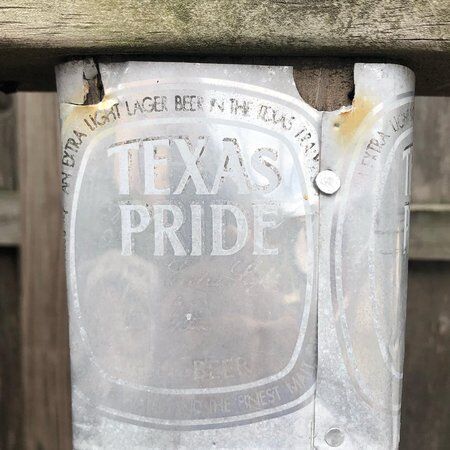
Beyond the Beer Cans
The garlands and windchimes not only make Beer Can House sing pleasantly in the breeze, they also lowered the Milkovischs’ energy bills. The couple also filled the yard with plants, which hung from the trees and grew in raised beds. Today a local gardening club invites the community to join in getting their hands dirty. The Beer Can House Garden Club meets regularly to maintain and educate its members on a collection of native butterfly plants and plan future projects in the community.
Ultimately, beyond its quirky appearance, the Beer Can House invites visitors to reflect on themes of sustainability, resourcefulness, and the transformative power of artistic expression. It serves as a reminder that beauty and creativity can emerge from unexpected places, and that a single individual's vision can leave a lasting impact on the community.
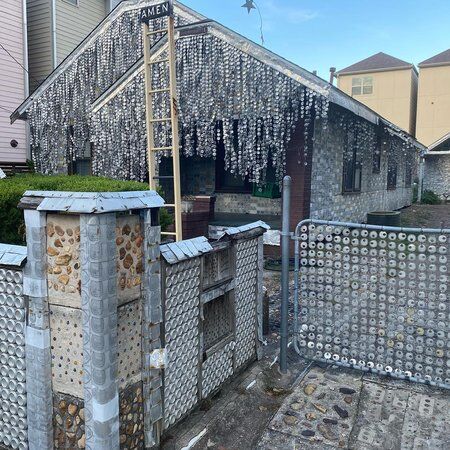
Beer Can House: A Cultural Landmark
Sadly, time and Houston’s erratic climate had faded and caused deterioration to John’s original artwork. But the Orange Show recognised the unique significance of Beer Can House, purchasing it for $200,000, in 2001. When Mary died one year later, the organisation drew up plans to return the house to its original glory and open it to the public as a viewing gallery and gift shop.
After extensive planning and careful restorations, Beer Can House opened to the public in 2008. It featured new beer can elements, which were created by countless volunteers, both locally and statewide, and was shortly designated as a city landmark. Even though Milkovisch was always rather bewildered by the attention that Beer Can House garnered, he was always very proud of his efforts and delighted when people would drive past and ogle at it.
“People doing everyday things that they enjoy can make a difference for others… This impacts other people, whether he set out to do it or not.”
Today, the property stands as a testament to Houston's rich artistic culture and serves as an iconic attraction for both locals and tourists alike.
For other attractions, appreciated by both locals and tourists, check out our Texas blog and read all about the hidden gems Houston and other cities have to offer!

Our Thoughts…
“They say every man should leave something to be remembered by—at least I accomplished that goal.”
Almost 35 years after John Milkovisch’s passing, Beer Can House continues to represent the imaginative spirit of its creator. This usual attraction highlights how beauty can be found in the most unconventional and mundane objects and avenues of life and society. It is a cherished symbol of artistic expression in the city. As visitors marvel at the shimmering walls adorned with countless beer cans, they are reminded of the limitless possibilities of creativity and the enduring legacy of one man's vision.
Interested in finding more places like this? Try one of our CityDays Exploration Games - untangle cryptic clues as a team, as you are taken on a journey to the most unique, unusual and bizarre corners of Houston and beyond.
